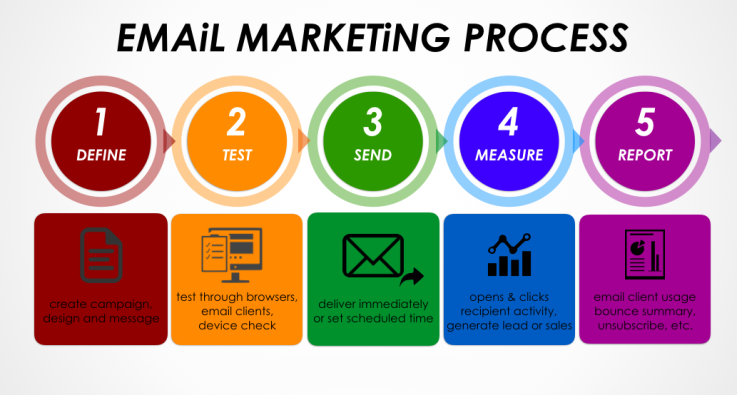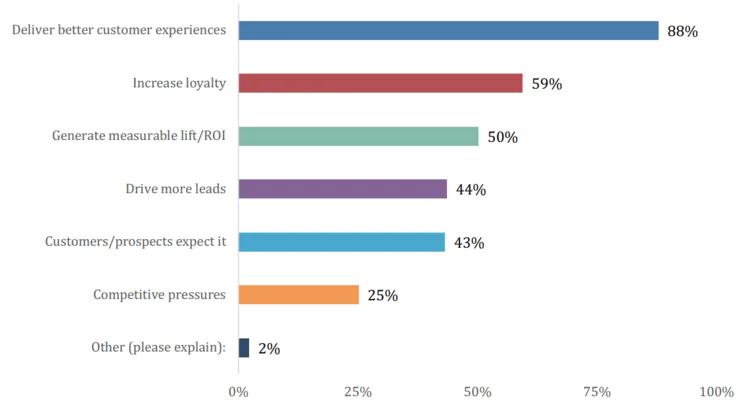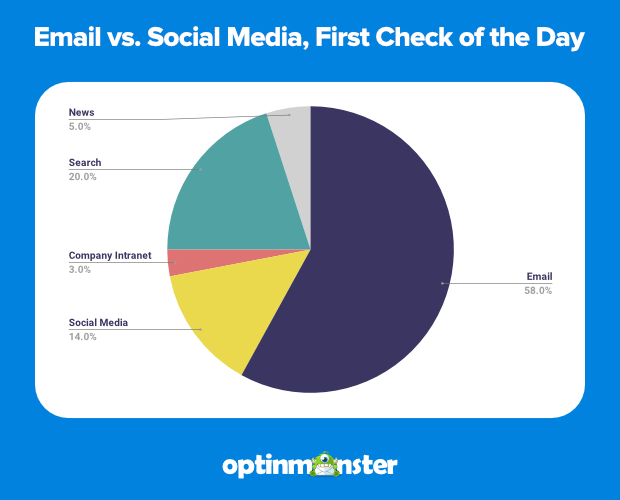One of the most important email marketing tasks is to reach a specific recipient with content that not only arouses interest but also provides information the receiver cares about. Additionally, email marketing allows you to accurately measure your target audience’s interest without being intrusive. According to the Content Marketing Institute, 87% of B2B marketers say email marketing is one of their best free distribution channels. Over a third of them consider email marketing the most effective way to care for customers. So how do you prepare content that will interest the recipient?
What is email marketing?
Simply put, email marketing is a form of direct marketing that uses email. Its primary task is to establish and maintain a relationship with your customer. The ability to divide your audience and adjust the content to their preferences is the most significant advantage of this tool. This form of marketing primarily fulfills an informative, promotional, and sales function. Email marketing also uses tools such as newsletters, surveys, and advertising messages.

How do you create a recipient base?
Your list of potential recipients is the foundation for successful email marketing. You may think it will take forever to create, but nothing could be further from the truth. In an earlier article, we described the importance of a company website, and that is where you start building your base. Provide your website visitors with the option to receive a newsletter or promotional offer. And don’t forget to social media! Remind visitors to sign up for your newsletter and stay up to date.
Personalization and relationship building
A critical aspect in creating email marketing content is personalization. Once we have a recipient base, we can divide it into several groups to adapt the marketing message. Creating a recipient profile will allow a broader range of influence and achieve the intended goal. Thanks to the measurements that we will analyze, we can see whether the client is interested in our content. It is the foundation for building a meaningful relationship with the recipient. An exciting message will strengthen our ties. Regularly sent and personalized mailings constitute constant contact, which is extremely important. Thus, you increase your presence in the customer’s mind.

High benefits at low cost
One of the most significant advantages of email marketing is the low cost of creating a campaign. It doesn’t require many tools or programs, just a little creativity. Copywriters who adequately describe what you want to convey to the client can create the email content. Many platforms are available to distribute our emails, and it’s simple to produce a message that can reach hundreds of recipients in minutes.
Widen your reach
Countless people check their inboxes every day. So this is your chance! It’s best to send your content in the morning because people usually check incoming emails less frequently as the day passes.

Measure the effectiveness of email marketing activities
The advantage of using email marketing is that you can measure your results. We can distinguish between many factors that will determine the effectiveness of our email marketing campaign. To assess the effectiveness of specific activities, it is worth analyzing the following indicators:
- Open Rate is an indicator of mailing openings. It determines the ratio of the number of open messages to all sent emails.
- Click Through Rate is an indicator that allows us to determine the interest of recipients in the content of the mailing. Among those who open the emails, some perform additional activities, read the content, and click on the links contained in the mailing. If you attach several links in the email, we can obtain detailed information on the number of entries in each link.
- The Unsubscribe Rate determines how many people unsubscribed after receiving a given message.
- Conversion Rate allows you to determine how many people clicking on our mailing performed the desired activity. The conversion can include making a purchase, signing up for an event, downloading an ebook, or filling out a survey. The goal of the action is determined individually each time, depending on the needs. When calculating CR, we check if our email marketing campaign is meeting the set goal.
- The Bounce Rate determines the percentage of website visits by internet users who, after clicking on the link redirecting from the e-mail, did not take the expected action and left the website after a few seconds. The higher the bounce rate, the greater the likelihood that our email did not reach the right group of recipients. The email was mistargeted.
- The Complaint Rate or Abuse Rate occurs when the recipient marks the message as SPAM or when the recipient unsubscribes and reports during the process that “they have not allowed receiving messages from this address”. 0.1% is accepted as the maximum acceptable rate of complaints.
- Return On Investment is a significant indicator if the primary focus of your email marketing efforts is to sell your products and services. Thanks to it, we can measure the effectiveness of the campaign. To calculate ROI, we need information about the profits achieved as a result of the campaign and the costs incurred for it. The higher the ROI, the more effective the campaign was.
By using email marketing tools, we have access to in-depth statistics. Therefore, it is worth using the data we have to test the effectiveness of our activities and to better match the messages to groups of recipients. It will improve the perception of the image and recognition of the organization.

Source: Statistics GetResponse
Summary
Building customer relationships should be a priority, and email marketing is essential to accomplish that. Properly prepared content will inform your clients about the latest news and keep the recipient from forgetting you. Learning a few simple rules about cost-effective emailing will benefit you more than many high-priced advertising campaigns.